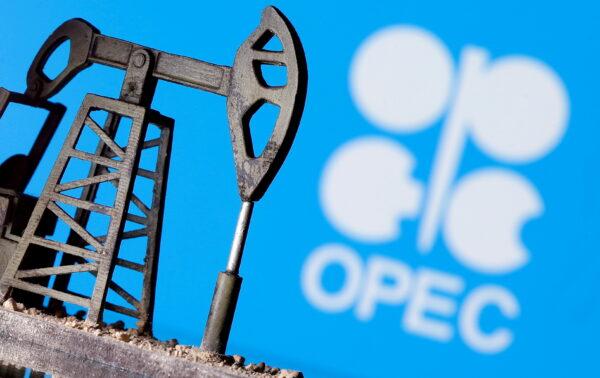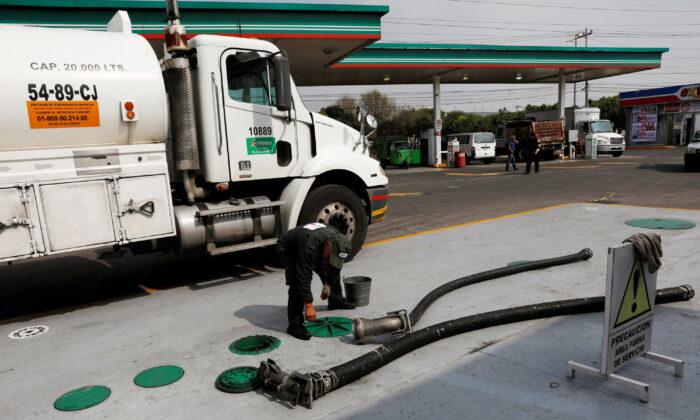LONDON—OPEC on Thursday cut its 2022 forecast for growth in world oil demand for a third time since April, citing the economic impact of Russia’s invasion of Ukraine, high inflation, and efforts to contain the coronavirus pandemic.
The view from the Organization of the Petroleum Exporting Countries contrasts with that of the International Energy Agency, the adviser to industrialized countries, which earlier on Thursday raised its 2022 demand growth outlook.
OPEC in a monthly report said it expects 2022 oil demand to rise by 3.1 million barrels per day (bpd), or 3.2 percent, down 260,000 bpd from the previous forecast. The IEA raised its forecast by 380,000 bpd to 2.1 million bpd.
Oil use has rebounded from the worst of the pandemic and is set to exceed 2019 levels this year even after prices hit record highs. However, high prices and Chinese coronavirus outbreaks have eaten into OPEC’s 2022 growth projections.
“Global oil market fundamentals continued their strong recovery to pre-COVID-19 levels for most of the first half of 2022, albeit signs of slowing growth in the world economy and oil demand have emerged,” OPEC said in its report.
OPEC cut its 2022 global economic growth forecast to 3.1 percent from 3.5 percent and trimmed next year to 3.1 percent, saying that the prospect of further weakness remained.
“This is, however, still solid growth, when compared with pre-pandemic growth levels,” OPEC said. “Therefore, it is obvious that significant downside risk prevails.”
OPEC Pumps More
OPEC and allies, including Russia, known collectively as OPEC+, are ramping up oil output after record cuts put in place as the pandemic took hold in 2020.
In recent months OPEC+ has failed to fully achieve its planned production increases owing to underinvestment in oilfields by some OPEC members and by losses in Russian output.
The report showed OPEC output in July rose by 162,000 bpd to 28.84 million bpd, a smaller increase than pledged.
OPEC’s take on the outlook for 2023 suggests that the market could remain tight.
OPEC left its 2023 world demand growth projection unchanged at 2.7 million bpd and expects supply from non-member countries to rise by 1.71 million bpd, meaning OPEC will need to pump around 900,000 bpd more to balance the market.
While the 2023 outlook for overall non-OPEC supply was left steady, OPEC sees a slight acceleration in U.S. shale growth.
Supply of U.S. tight oil, another term for shale, is expected to rise by 800,000 bpd in 2023, up from 740,000 bpd in 2022, although this year’s forecast was revised down.





